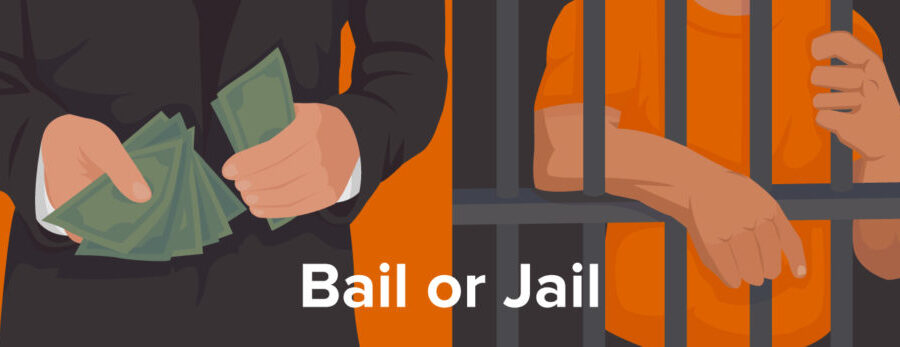Introduction
The legal principle of ‘Bail or Jail’ encapsulates a fundamental dichotomy within the criminal justice system. It is rooted in the balance between an individual’s right to liberty and the necessity of ensuring justice and public safety. In India, this balance is articulated through various laws, including the Indian Penal Code (IPC), the new Bhartiya Nyay Sanhita (BNS), and special acts like the Unlawful Activities (Prevention) Act (UAPA), Prevention of Money Laundering Act (PMLA), Narcotic Drugs and Psychotropic Substances Act (NDPS), Protection of Children from Sexual Offences Act (POCSO), and the Juvenile Justice (Care and Protection of Children) Act (JJ Act). This article examines how these laws navigate the bail-jail paradigm, focusing on their key provisions and practical implications.
The Indian Penal Code (IPC) and Bhartiya Nyay Sanhita (BNS)
The IPC, established in 1860, has long been the backbone of criminal law in India. It classifies offenses and prescribes punishments, forming the basis for bail considerations. The new Bhartiya Nyay Sanhita (BNS) aims to modernize and reform these provisions.
Bail under IPC and BNS:
- Bailable and Non-Bailable Offenses: The IPC categorizes offenses into bailable and non-bailable. Section 436 of the Criminal Procedure Code (CrPC) grants bail for bailable offenses as a matter of right. Non-bailable offenses, under Section 437, require judicial discretion. The BNS retains this distinction but aims to streamline the bail process, reducing judicial backlog.
- Judicial Discretion: Judges consider factors like the nature of the offense, severity, evidence strength, and likelihood of the accused absconding or tampering with evidence. The BNS proposes clearer guidelines to ensure consistency in bail decisions.
Impact of BNS Reforms: The BNS emphasizes human rights, intending to reduce pre-trial detention, which often leads to overcrowded prisons and undue hardship on the accused. By introducing time-bound procedures and promoting alternative dispute resolution mechanisms, the BNS aims to expedite justice.
Special Acts and Their Bail Provisions
Unlawful Activities (Prevention) Act (UAPA):
- Stringent Provisions: UAPA, aimed at combating terrorism and unlawful activities, has stringent bail provisions. Section 43D(5) mandates that bail can only be granted if the court finds no prima facie case against the accused. This significantly raises the bar for obtaining bail.
- Criticism and Human Rights Concerns: Critics argue that UAPA’s stringent bail provisions often lead to prolonged detention without trial, infringing on civil liberties. However, proponents assert its necessity in ensuring national security.
Prevention of Money Laundering Act (PMLA):
- Anti-Money Laundering Focus: PMLA addresses financial crimes and money laundering. Section 45(1) initially imposed strict conditions for bail, requiring courts to be satisfied that the accused is not guilty prima facie.
- Supreme Court Intervention: The Supreme Court, in 2018, diluted these provisions, stating that they were unreasonable and arbitrary. This has made it relatively easier for accused individuals to seek bail under PMLA.
Narcotic Drugs and Psychotropic Substances Act (NDPS):
- Strict Bail Conditions: NDPS, governing drug-related offenses, imposes severe restrictions on bail. Section 37 mandates that bail can only be granted if the court is satisfied that there are reasonable grounds for believing the accused is not guilty and will not commit any offense while on bail.
- Judicial Discretion: Despite these stringent conditions, courts have exercised discretion in granting bail in cases where the quantity of drugs involved is small or the accused has a valid defence.
Protection of Children from Sexual Offences Act (POCSO):
- Child Protection Emphasis: POCSO aims to protect children from sexual offenses, prescribing stringent punishments. Bail under POCSO is discretionary, with courts considering the gravity of the offense and the impact on the victim.
- Special Courts: POCSO mandates the establishment of special courts for speedy trial, ensuring that bail decisions are prompt and sensitive to the victim’s needs.
Juvenile Justice (Care and Protection of Children) Act (JJ Act):
- Child-Centric Approach: The JJ Act, focusing on children in conflict with the law, emphasizes rehabilitation over punishment. Bail is generally granted unless the child’s release would bring them into association with known criminals or expose them to moral danger.
- Observation Homes: Instead of jail, juveniles are sent to observation homes, underscoring the Act’s rehabilitative approach.
Comparative Analysis
Consistency and Discretion:
- IPC/BNS vs. Special Acts: While IPC and BNS provide a balanced approach to bail, focusing on judicial discretion and the severity of the offense, special acts like UAPA and NDPS impose stringent conditions reflecting the gravity of the crimes they address.
- Human Rights vs. Public Safety: Special acts prioritize public safety over individual liberty, often leading to human rights concerns. In contrast, IPC/BNS reforms aim to uphold human rights, promoting fairness and justice.
Judicial Trends:
- Evolving Jurisprudence: Indian courts have increasingly emphasized the need to balance individual rights with societal interests. Landmark judgments have stressed that bail should not be denied as a form of punishment.
- Supreme Court Directives: The Supreme Court has issued guidelines to lower courts, advocating for a humane approach to bail and underscoring the principle that bail is the rule, and jail is the exception.
Conclusion
The interplay between bail and jail in India reflects a complex legal landscape shaped by the IPC, BNS, and various special acts. While the IPC/BNS provide a structured and balanced framework for bail decisions, special acts like UAPA, PMLA, NDPS, POCSO, and the JJ Act impose stringent conditions tailored to their specific mandates.
As India continues to evolve its legal framework, ensuring that bail provisions are fair, just, and consistent with human rights principles remains crucial. The ongoing reforms under the BNS and judicial interventions highlight the dynamic nature of the Indian legal system, striving to achieve the delicate balance between safeguarding individual liberty and ensuring public safety.
Contributed By: Aakash Jaggia (Intern)
O. P. Jindal Global University, Jindal Global Law School.


Автор не высказывает собственных предпочтений, что позволяет читателям самостоятельно сформировать свое мнение.